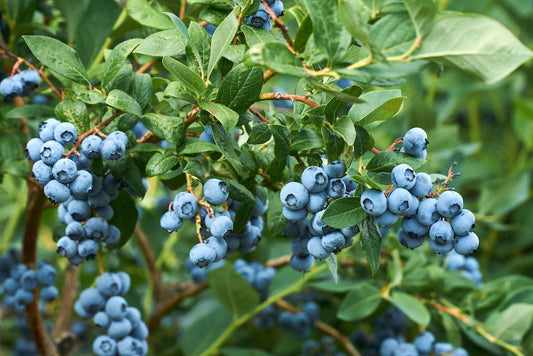Apples are more than just a popular fruit – they have a fascinating history and numerous interesting aspects. Whether for their health benefits or simply as a tasty snack, apples are everywhere. Are there any facts about apples that anyone doesn't know? Absolutely! Join us and discover nine amazing facts about apples!
Want to eat healthier breakfast? We can help you with that – this way!
1. Apples: their relationship with roses
The surprising relationship between apples and roses is a fascinating aspect of the botanical world. Both belong to the rose family (Rosaceae), which indicates their common genetic origin. Despite obvious differences, apples and roses share amazing similarities at the genetic and structural level.
This connection goes back to common characteristics such as their flower structure and fruit development. In addition, both plants also share similar genetic markers that link their evolutionary history. This botanical relationship reveals the diversity and interconnectedness within the plant world and highlights the amazing adaptations that have arisen in the course of evolution.
Rose or apples?
The knowledge of this relationship sheds new light on the diversity of the rose family and opens up possibilities for further research into the evolution and genetic diversity of plants. This unexpected connection between apples and roses illustrates the complexity and beauty of nature and encourages deeper understanding and discovery in the plant world.
2. The Fall of Man in the Old Testament
In the biblical context, the apple often symbolizes the forbidden fruit in the Fall of Man. Although the text does not explicitly mention an apple, this idea has become established over time. This cultural interpretation characterizes narratives and art and connects the apple with the idea of temptation and moral fall. This symbolic meaning has shaped the apple as an iconic element in the narrative of the Fall of Man and continues to influence artistic representations and literary interpretations of this ancient myth to this day.
3. The oldest apples and special varieties
The world of apples is rich in history and diversity, as reflected in its oldest varieties and the continuous breeding efforts. Some of the oldest apple varieties, such as the “Court Pendu Plat” or the “Reinette of Landsberg”, date back centuries and bear witness to times gone by. These varieties provide an insight into the evolution of fruit cultivation and carry a piece of historical apple diversity.
On the other hand, there are modern varieties that have been bred for specific flavors, textures or to adapt to different climates. Through targeted crossbreeding and selection processes, new varieties are created that are designed to meet today's consumer needs.
With Verival No added sugar for breakfast – this way!
New varieties: a game of patience
The continuous breeding of apples is an ongoing process that requires science, skill and patience. The search for new flavors, improved harvests and resistance to disease is a dynamic area that is constantly renewing and developing the world of apples.
4. Apple allergy
Although apples are a healthy and tasty fruit for many, unfortunately some people can have an allergic reaction to them. Apple allergy is comparatively less common than other food allergies, but for those affected, it can cause unpleasant symptoms such as itching of the mouth, swelling of the lips, redness or stomach discomfort.
Interestingly, the reaction to apples can be due to different proteins. Some people may react to a protein in raw apples, while they tolerate cooked apples better. For others, the cause may be the heat-stable protein, which remains even when the apples are baked or heated.
Although apple allergy does impose some limitations, cooking or baking apples may be a solution to alleviate the symptoms. Nevertheless, it is advisable to seek medical advice for any allergic reaction to apples to determine the cause and take appropriate action.
5. The ripening effect of apples on other fruits
Apples release the gas ethylene, which can accelerate the ripening process of other fruits. This natural ripening gas is often used to control the ripening process of other fruits. So apples can help other fruits ripen faster.
Start your day right with apples
6. Red apples vs. green apples
The debate between red and green apples is not only about their color, but also about their different health properties. Red apples, such as the classic Red Delicious, contain anthocyanins, which act as antioxidants and are beneficial for health. These antioxidant compounds are associated with improved heart health and protection against certain diseases.
On the other hand, green apples, like the Granny Smith, are characterized by their higher vitamin C content and lower sugar content. This makes them a good choice for those who want to consume less sugar or meet their vitamin C needs.
Ultimately, both red and green apples offer health benefits, and the choice between them often depends on individual preferences and nutritional goals. The wide variety of apple varieties makes it possible to find the right type for every taste and nutritional requirement.
7. Apple Day on November 10
Celebrated worldwide on November 10, Apple Day honors the importance of this beloved fruit. In addition to celebrating the wide variety of apple varieties, the day also highlights the cultural, nutritional, and economic relevance of apples.
During this festive occasion, various activities are organized to raise awareness of apples and celebrate their wide range of uses. From tastings of different apple varieties to cooking or baking competitions with apples as the main ingredient, there are many ways to celebrate this day.
Apple Day is also an opportunity to highlight the importance of apples for nutrition and health. It serves as a platform to educate about the health benefits of apples and to raise awareness of their role as a versatile and nutritious fruit.
Discover our delicious Verival porridge here
8. The variety of apple varieties
The world of apples is a treasure trove of over 7,500 varieties! From the sweet Honeycrisp to the tart Granny Smith, apples offer a wide range of flavors and textures. Each variety has its unique characteristics and contributes to the diversity of the apple world.
Local favorites and global classics
Certain apple varieties are more popular in different regions of the world. While some varieties are known worldwide, other local or regional varieties have loyal supporters. This diversity reflects the different climatic conditions and consumer preferences.
9. The myth surrounding Isaac Newton
The myth of Isaac Newton being struck by an apple and thereby discovering gravity is deeply rooted in the history of science. While there is no concrete evidence for this incident, the story remains a fascinating example of the ingenuity and curiosity of the human mind.
The symbolism of the apple in science
The apple is not just a fruit, but a symbol of knowledge and insight. The connection between the apple and Isaac Newton's discovery of gravitation has helped to give the apple a special place in scientific symbolism.
Apples: Summary and Conclusion
The world of apples is full of fascinating details and amazing facts. From their botanical relationship with roses to cultural traditions and special events like Apple Day, there is a lot to discover.
Whether you are exploring the oldest apple varieties, reading about their connection to the Fall of Man, or investigating the health benefits of different colored apples, the diversity and importance of this fruit are impressive.
























